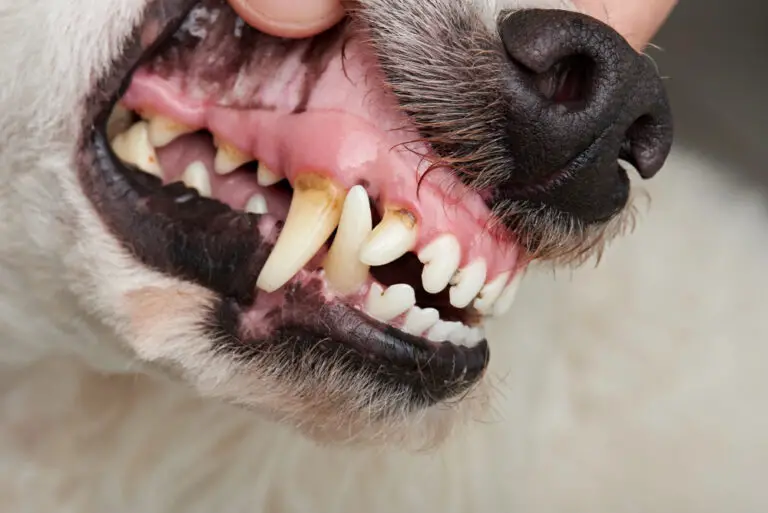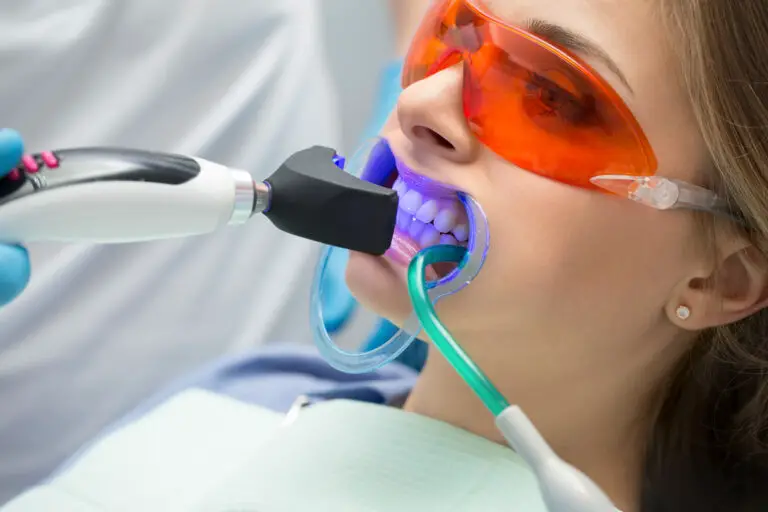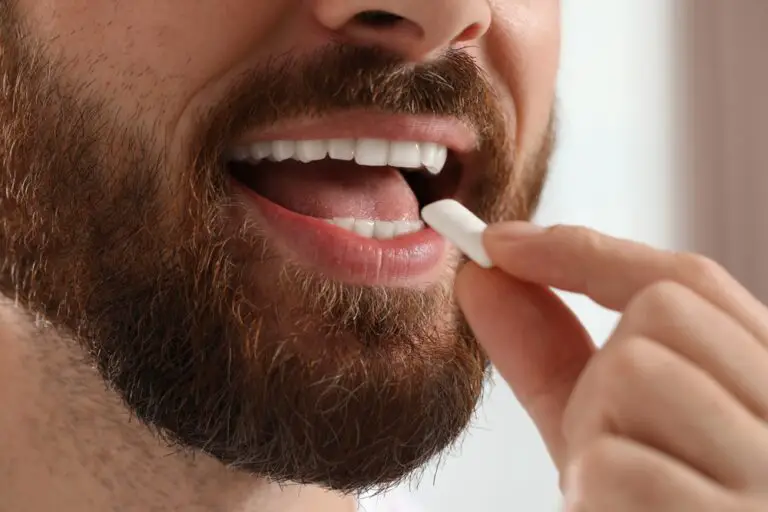Have you ever bitten into an ice cream cone or icy cold drink and felt a sudden jolt of pain shoot through your teeth? This painful sensitivity to cold temperatures is common and usually harmless in the short-term. But frequent or severe temperature sensitivity can indicate an underlying dental problem needing attention.
Understanding the causes of temperature sensitive teeth and when to seek treatment can help you manage this uncomfortable condition.
A Closer Look at Tooth Anatomy and How Cold Affects It
Teeth are complex structures composed of different tissues that each play a role in sensory function. Understanding tooth anatomy helps explain why temperature changes can cause pain.
1. Enamel
This outer layer is the hardest substance in the human body. Enamel is composed mainly of hydroxyapatite, a mineral crystal that gives it strength and durability.
However, enamel is not a living tissue. It does not contain nerve endings or blood vessels. This means enamel itself cannot sense hot or cold temperatures.
2. Dentin
Under the enamel lies dentin, which makes up the bulk of each tooth. This yellow, bonelike tissue is full of tiny tubules, each about 1 micrometer in diameter.
These dentin tubules contain fluid and nerve fibers extending outward from the inner pulp. Dentin plays a crucial role in temperature sensitivity due to the presence of these exposed nerves.
3. Pulp
At the center of the tooth lies the pulp chamber. It contains blood vessels, connective tissue, and nerve fibers. The pulp provides nutrients to the surrounding dentin layers.
The pulp is also intimately involved in temperature regulation of teeth. Nerves from the trigeminal ganglia enter the pulp through the root canals. When stimulated by hot or cold, these nerve fibers carry signals back to the brain.
How Cold Affects Teeth?
When something cold, like an ice cream cone or icy drink, touches your teeth, it creates a rapid drop in temperature.
This temperature change causes microscopic fluid shifts in the dentin tubules. Cold causes the fluid to move inward, while heat makes it flow outward.
The cold stimulus enters the open tubules and reaches the sensitive nerve fibers in the pulp. These temperature-sensitive nerves generate pain signals that travel through branches of the trigeminal nerve to the brain.
The trigeminal nerve has three branches providing sensation to different areas of the face. The maxillary division carries signals from the upper teeth, while the mandibular branch serves the lower teeth.
When the brain receives these incoming signals, it interprets them as pain coming from the affected tooth or teeth in response to the cold.
This is the reason you perceive that sharp, unpleasant sensation when drinking or eating something cold. Your teeth are simply reacting to the temperature change.
Why Do Some Teeth Become Hypersensitive?

Many people experience occasional mild tooth sensitivity, especially to cold. But some people develop hypersensitive teeth that cause severe discomfort with hot or cold stimuli.
This occurs when the inner dentin and pulp layers become more exposed. normally, the enamel protects these lower layers. But if the enamel erodes or thins, the dentin tubules open up, allowing more stimulation of the nerve fibers.
Here are some of the main causes of loss of protective enamel:
1. Erosion Due to Diet
Frequent consumption of acidic foods and drinks wears away enamel over time. Beverages like carbonated soft drinks, fruit juices, wine, and sports drinks all contain high amounts of erosive acids.
Citric acid from citrus fruits, malic acid from apples, and phosphoric acid in sodas are common culprits. The lower the pH, the higher the enamel erosion potential.
With thinner enamel, cold stimuli can more easily penetrate the exposed dentin and reach the sensitive pulp.
2. Aggressive Brushing
Vigorous tooth brushing with a hard-bristled brush can also remove small amounts of enamel from the tooth surface.
Brushing with excessive horizontal force or using abrasive whitening toothpastes promotes enamel erosion. This also makes teeth more prone to temperature sensitivity.
3. Gum Recession
Periodontal disease causes inflammation and breakdown of tissues surrounding the teeth. As gums recede down the root surface, the protective enamel layer gets thinner near the gum line.
Root surfaces have a thinner layer of enamel than the crown. Exposed root surfaces allow cold stimuli to penetrate closer to the pulp.
4. Tooth Grinding and Clenching
Chronic teeth grinding (bruxism) or forceful clenching can chip and wear down enamel. This thinning of the enamel exposes more dentin and increases sensitivity.
5. Tooth Whitening Treatments
Chemical whitening strips, gels, or professional treatments can temporarily degrade enamel and dentin. This affects their insulation properties and ability to block stimuli from reaching the pulp.
When to Seek Treatment for Temperature Sensitive Teeth?

Mild tooth sensitivity that comes and goes is common and usually not a concern. But severe or persistent temperature sensitivity that disrupts sleep or eating should be evaluated promptly.
See your dentist if sensitivity is accompanied by other symptoms like toothaches, swelling, bad breath, or loose teeth. This could indicate an underlying dental health issue needing treatment.
Signs you should be evaluated include:
- Sensitivity lasting more than 2 weeks
- Pain that shoots deep into the tooth
- Hot and cold sensitivity in the same tooth
- Multiple teeth becoming sensitive
- Sensitivity not coming from an apparent cause like diet
Treatment will depend on the diagnosed cause but may involve:
- Topical fluoride to strengthen enamel
- Fillings and crowns to cover exposed dentin
- Root canal if the pulp is inflamed and infected
- Gum surgery to prevent further recession
Leaving sensitivity untreated allows more irritation of the tooth pulp which can lead to dental abscesses, tooth fractures, and eventual tooth loss.
Tips for Managing Temperature Sensitive Teeth
If you experience occasional mild temperature sensitivity, these tips can help reduce discomfort:
- Use desensitizing toothpaste – Brands like Sensodyne contain active ingredients like stannous fluoride or potassium nitrate that calm nerve pain.
- Avoid acidic foods/drinks – Limit intake of citrus fruits, juices, wine, carbonated drinks, and other items low in pH.
- Drink cold drinks through a straw – This minimizes contact with front teeth.
- Rinse mouth with water after acidic food/drinks – Rinsing helps neutralize acid and prevent erosion.
- Avoid extreme hot or cold foods/drinks – Allow very hot or cold items to reach room temperature before consuming.
- Get fluoride treatments – Ask your dentist about prescription strength fluoride gels, rinses, or varnishes to remineralize enamel.
- Use a soft bristle toothbrush – Gently brush twice daily using minimal pressure on enamel surfaces.
Seeing your dentist regularly for exams and cleanings is important both for preventing and catching sensitivity issues early. Proper oral hygiene and dental care can help keep pain-inducing sensitivity at bay.
When Tooth Pain May Indicate Something More Serious?

In some cases, temperature sensitivity may be a sign of advanced tooth decay, infection, or nerve damage requiring prompt dental attention.
1. Symptoms Requiring Urgent Dental Care
See a dentist immediately if temperature sensitivity is accompanied by:
- Throbbing toothaches that last for hours, even without stimulus
- Pain when chewing or biting down
- Swelling of the gums around a tooth
- Bad breath or pus discharge from the gums
These could indicate tooth decay has reached the pulp. Infection of the tooth pulp can spread rapidly to surrounding tissues and lead to dental abscesses and tooth loss. Root canal treatment or extraction may be required for relief.
2. Symptoms Requiring Emergency Medical Care
Seek emergency medical help right away if you have:
- Facial swelling extending beyond the tooth area
- Difficulty breathing or swallowing
- Fever above 100°F (38°C)
These are signs a dental infection is spreading deeper into facial tissues and could become life-threatening. You may need hospitalization for IV antibiotics and surgical drainage of infection.
Don’t delay getting help if you have severe tooth pain along with temperature sensitivity. Prompt professional treatment can stop the infection and potentially save the tooth if caught early.
Frequently asked questions about cold sensitive teeth
Here are answers to some common questions about temperature sensitivity:
What is the best toothpaste for sensitive teeth?
Look for a toothpaste containing ingredients like potassium nitrate or stannous fluoride. These help block pain signals. Sensodyne, Colgate Sensitive Pro-Relief, and Crest SensiStop are examples. Use twice daily.
Is sensitive teeth genetic?
Yes, there can be a genetic predisposition to thinner enamel or gum recession which leads to sensitivity. However, diet and oral hygiene habits also play a major role.
Can sensitive teeth be cured?
In many cases, yes. Sensitive teeth can be treated by addressing the underlying cause, whether it’s eroded enamel, gum recession, or cracked teeth. Proper dental treatment and at-home care can resolve sensitivity for the long-term.
Why are my teeth sensitive to cold but not hot?
It is more common for teeth to be sensitive to cold than hot. Extreme cold causes more rapid fluid shifts in the tubules that trigger stronger nerve pain signals. Teeth can be just as sensitive to hot, but hot foods are not consumed at such temperature extremes.
Why are my teeth suddenly sensitive to cold?
Sudden sensitivity could be due to fracturing a tooth, developing a cavity reaching the pulp, gum recession from periodontal disease, or loss of enamel. See your dentist to determine the cause and get treatment to address it.
The Bottom Line
Temperature sensitivity arises when the inner layers of the tooth become exposed. While occasional sensitivity is common, chronic or severe sensitivity should be evaluated by your dentist.
Proper oral hygiene, diet, use of desensitizing products, and regular dental visits can help manage sensitivity. But if pain worsens or spreads, prompt dental treatment is needed to resolve the underlying cause and prevent serious complications.







